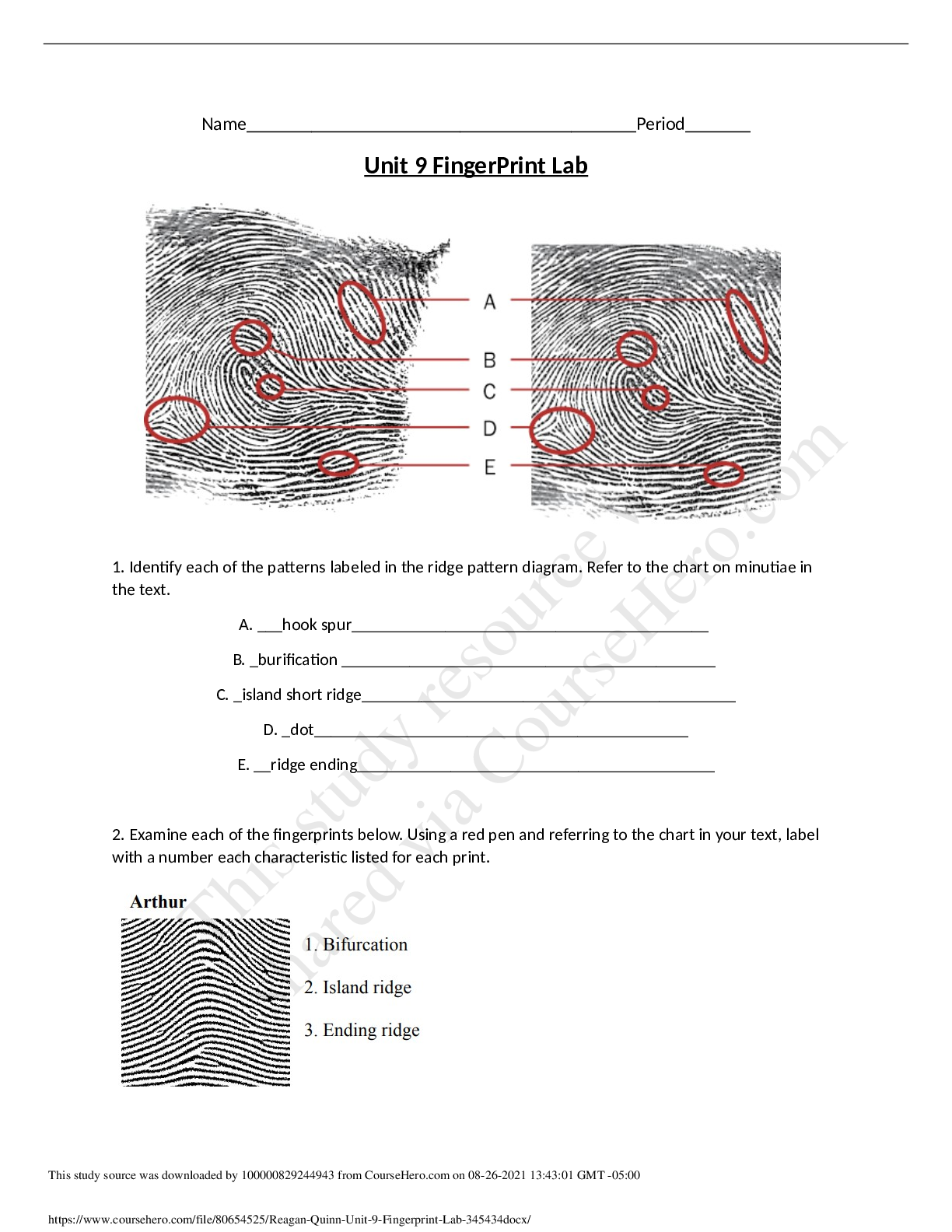Biology > Lab Report > Crayfish Cardiac Physiology University of North TexasBIOL 4510Final Edition AnimalP Lab Report (All)
Crayfish Cardiac Physiology University of North TexasBIOL 4510Final Edition AnimalP Lab Report
Document Content and Description Below
Introduction Crayfish are aquatic invertebrates and are concentered freshwater crustaceans. They are related to lobsters, shrimps, and craps. Crayfish can be found in ponds, streams, lakes, muddy a... reas, vegetated areas, rocky areas, and even brackish waters (for the more salinity tolerate crayfishes) (Fofonoff and others,2016). Crayfish spend most of their time in the water, however, they can spend short amounts of time out of the water also. However, they must keep their gills moist to prevent them from drying out. When water levels are low the crayfish becomes active in finding a new source of water, hence increasing the heart rate. Crayfish change their internal temperature depending on their environments temperature. If there is a decrease in the environment’s temperature their internal temperature will decrease and slow down their heart rate. The adult crayfish’s heart is neurogenic meaning the normal heart rhythm and beat are indicated by the cardiac ganglion neural output (Listerman and Others, 2000) [Show More]
Last updated: 2 years ago
Preview 1 out of 6 pages

Buy this document to get the full access instantly
Instant Download Access after purchase
Buy NowInstant download
We Accept:

Reviews( 0 )
$11.00
Can't find what you want? Try our AI powered Search
Document information
Connected school, study & course
About the document
Uploaded On
Jun 28, 2021
Number of pages
6
Written in
Additional information
This document has been written for:
Uploaded
Jun 28, 2021
Downloads
0
Views
54














